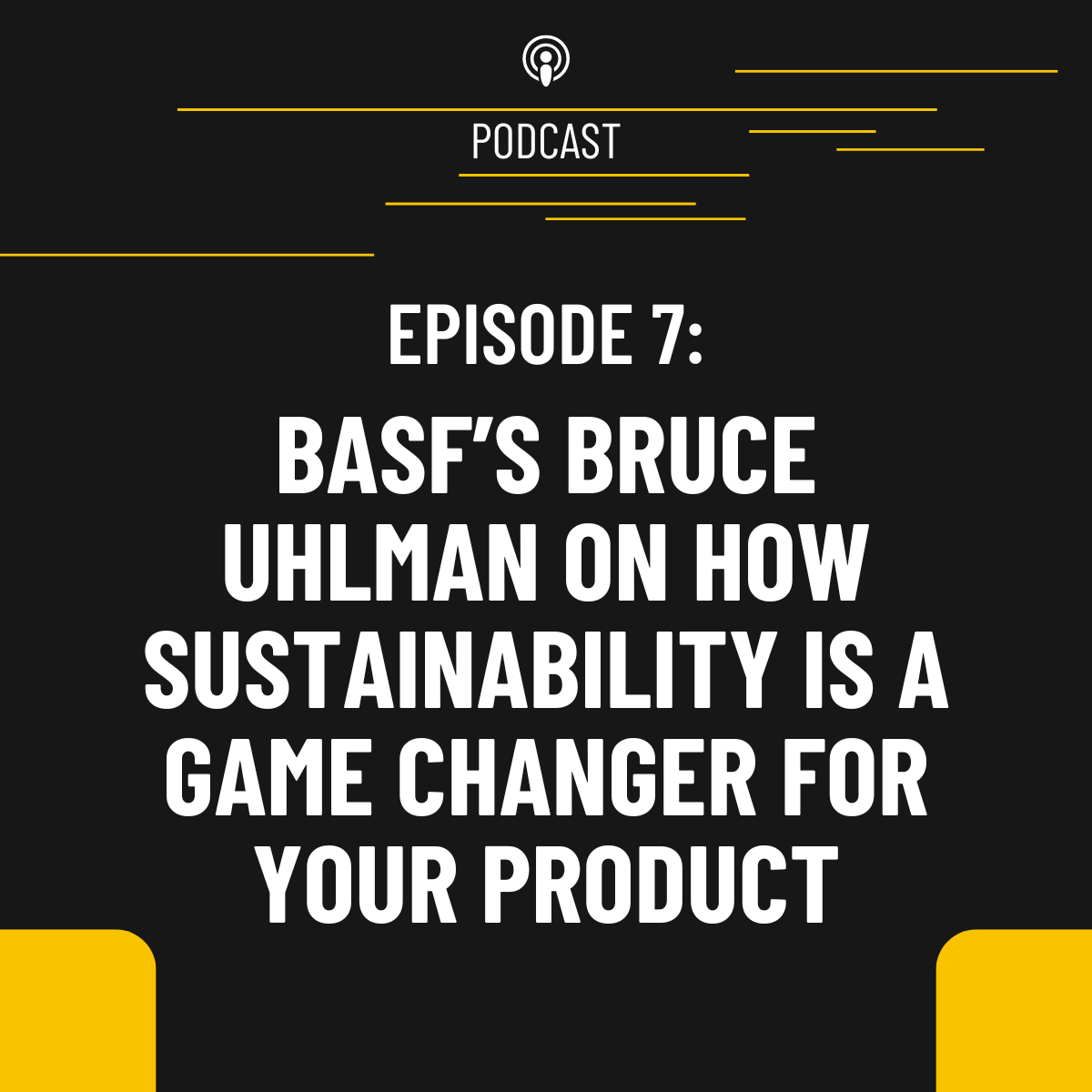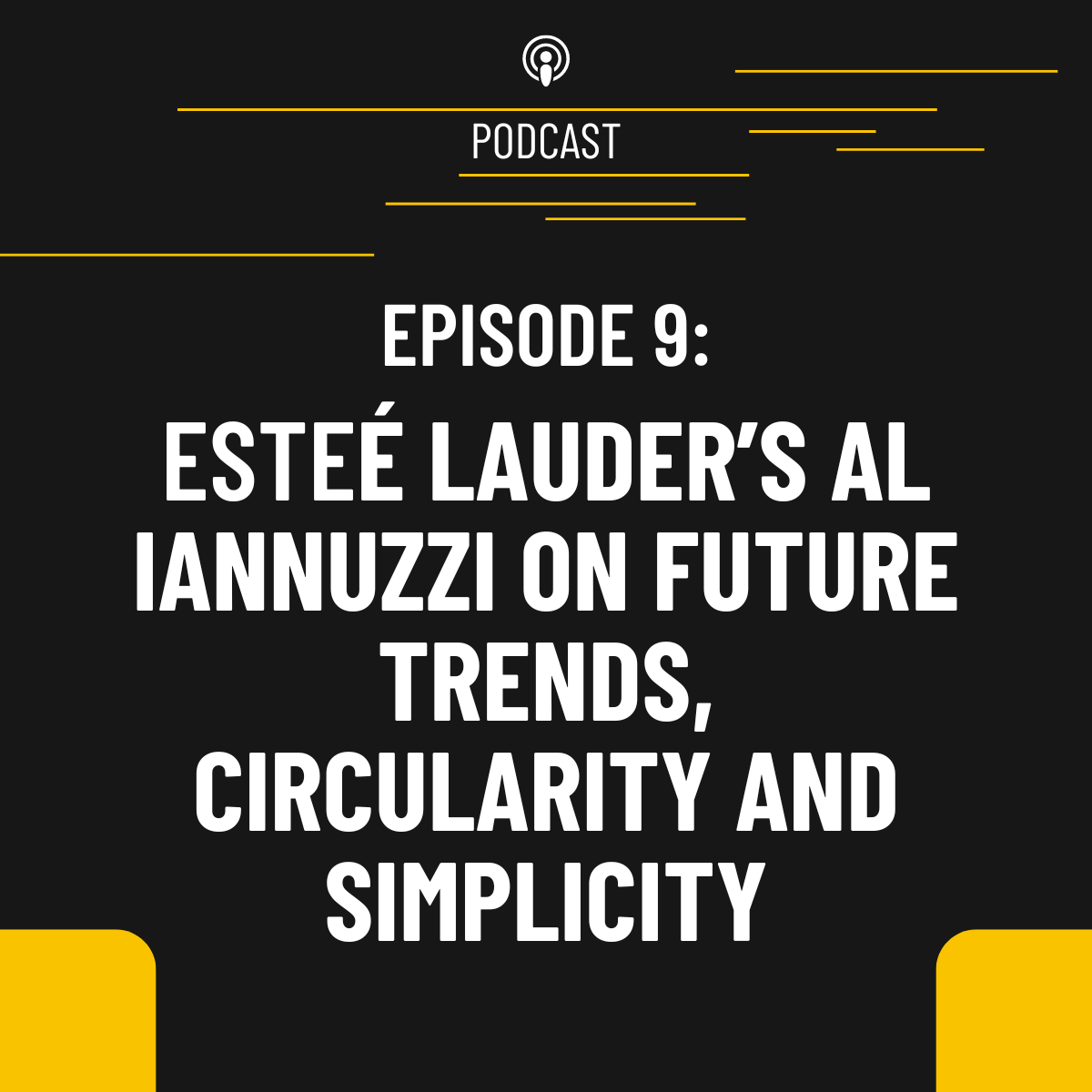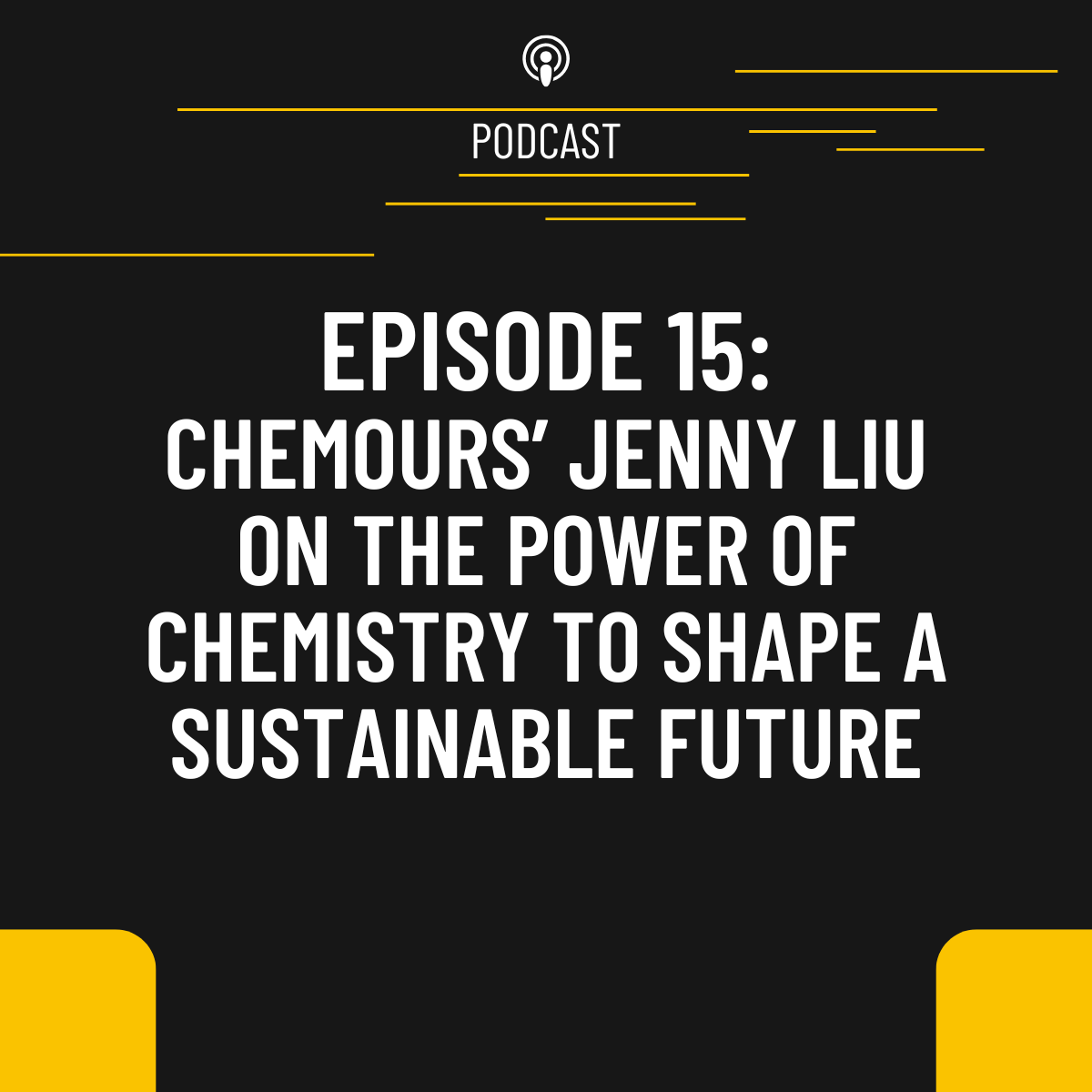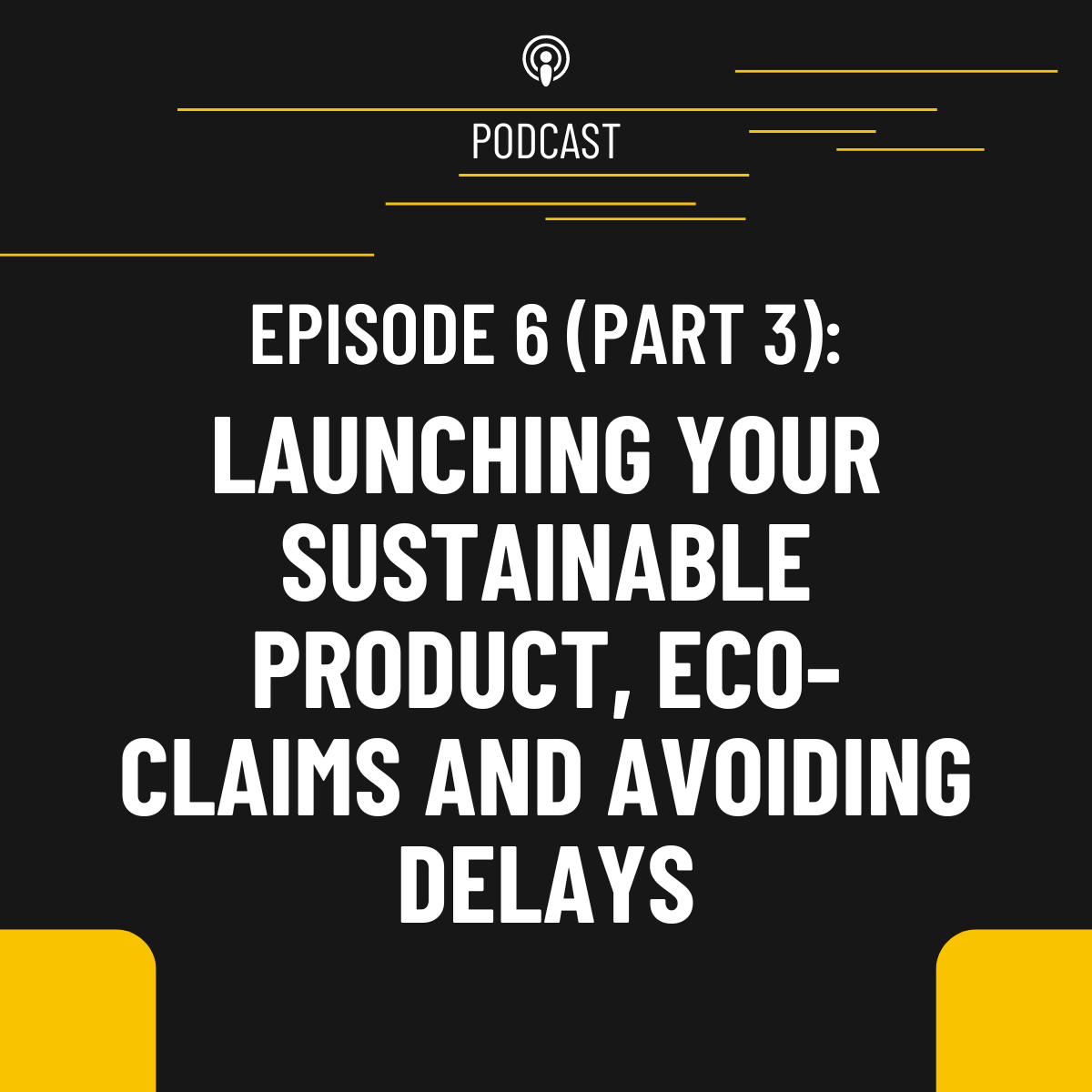Show Notes
In episode 8, we’re pleased to welcome another guest to the podcast – Stanley Black & Decker’s Product Sustainability Senior Director Dan Fitzgerald.
If you don't know about Stanley Black & Decker, it is the largest tool company in the world with over 100 manufacturing facilities worldwide. In his role, Dan leads the ‘innovate with purpose’ pillar under the corporate social responsibility strategy, which includes goals focusing on addressing unmet societal needs, circular design, and sustainable supply chain.
In this episode, Dan, Neil and Jim discuss the problems product managers have in embedding sustainability into products, recycling quotas and design requirements and the growing demand for a ‘greener’ approach.
In this episode
Shelley - Dan, could you start by telling us what you think is hindering product managers from embedding sustainability into products? [01:09]
- Dan - It's not that product managers don't want to. I just think the nature of the job has been so granularly focused on the details of the product itself in operation. How much does it weigh for a tool? How much power does it have? Does it rest nicely on my belt hook, right? We're talking personal preferences on how you use a product and gathering those requirements of what is going to make a winning product. [01:22]
- It's not that end users don't care about sustainability. I think there's an assumption from an end user that things of that nature, such as following the laws, and minimizing impact when you create things that companies are doing that already. And it's not on them to tell product managers, even if they know how to communicate that in the first place, because sometimes if you're not in that space, you just don't know the details.
- What I think misses a little bit is that the follow up because the end-user is not saying anything about it [sustainability]. So, it doesn't get placed in a high priority in the product specification because the end user isn't directly saying it. But we all know it is needed at some point to either pass through a regulatory requirement or even the customer. And in our case, our customers are retailers because we don't sell directly to the end user. So, a customer may have a requirement because they're focused on sustainability that we need to meet such that the end user has an option to buy it in that store.
Neil - Dan, could you clarify that a bit? Because I think that's unique to the other conversations we've had. You have two customers, and I think that's not obvious to everyone. [03:03]
Dan - We maybe even have more behind the contractor. The person that hires the contractor could also have requirements. I think this idea of the expanding end user and seeing it more of a worldview about everything you have to hit to get a product out the door, that's when sustainability starts making it into the doc. [03:11]
- Neil - There was a study done by McKinsey, I think back in 2019, where they asked exactly this question because they were wondering, why is it that we don't see sustainability in requirements from customer surveys? And what they found was customers expected brands to take care of this. I think it was a pretty significant number. [03:31]
- That said, we're assuming the brands we buy from are not engaging in unsustainable practices. I think in the past, if there was something bad happening in the supply chain, you didn't need to tell anyone about it. But this has become very different especially and regulations in Europe are forcing this. In one of these podcasts, I mentioned what Europe is doing is, and what regulation does in general is it makes you live in a glass house. And people live very differently when they're in a glass house. And that's, imagine a company living in a glass house. That's what the regulations are doing in Europe around transparency.
- It's important to ensure the company takes care of this and not rely on the fact that customers are not explicitly asking for sustainability. And I think just to elaborate on the two kinds of customers, you guys sell to retailers and then retailers sell to customers. And the needs and requirements that each of them has can be different for direct to customer businesses. I think this is slightly different, but I think for you guys, this is a significant detail when thinking about sustainability strategies.
- Dan - It is for sure. What I think it helps with is that while the end user may not be saying it, the customer gives the cue we need to be focusing on this and our regulatory department as well. But the big thing I found is if it's legally required or there's an official framework (e.g., truth in advertising, safety code), all that stuff in our product development - we handle it not through the end user saying, hey, I don't want that thing to shock me. But we have functions along the way in the product development process that check in and say, oh you want to say this? Do you have data for that? [05:15]
- Really, the sweet spot of how do you crack this nut of how far do you go more voluntarily on sustainability? How much recycled content? If the threshold is 10% from New Jersey in packaging and you want to go 50% to get ahead of the game, where does that come into the design process to do that, if not the end user or a customer or government? And so, I think that's really the place to focus on. [05:58]
- If you want to go over and above and by how much, you almost need to build that into that product spec spot. Because to me, that's the spot where you're not prescribed by some law somewhere to do something like truth and advertising. What does the customer want? [06:32]
- You can do whatever you want there hoping that it matches what they need and that same opportunity is there for the voluntary sustainability stuff at that point in time. Which is why I think it's critical to be in that document because no other function along the way is going to be checking in because it's not a formal law requirement yet. [06:46]
Neil - I'm curious about that very example that you mentioned. Let's say there's a law that says you need to hit a 10% recycling quota. Somehow this needs to be plugged into the development process. Whether it's now 15 or 50 or 100%, it would have already been in the development process. The same thing with you should not shock people. There's no obvious requirement that says please don't shock people. So, I'm very curious about how these kinds of non explicit requirements make their way into the design requirements. [07:07]
- Dan - I think a core of all business ethics is to follow laws. So first and foremost, you're going to say we follow laws. If the law is there, we're not going to not abide by it. But I think over and above, within the backdrop of the safety topic, you also have the civil court system, which you cannot follow the law, go through your criminal penalties, but then on top of that, if an injury has occurred due to that, you also have a potential financial risk associated with that. I don't know how it evolved, but obviously if you're a startup company and you're putting out unsafe stuff and you're being sued and losing a lot of money, you're not going to be in business very long. So, its a negative cost avoidance on top of following the law there as well, that I think helps drive it. [07:42]
Jim - Dan, I saw you post recently on LinkedIn - I'm not sure I got the exact wording - but your feeling is that companies are going to have to embed sustainability innovation because the customers or the end users are demanding it or regulations will require it. And I thought that was right on, and the issue that has to be dealt with is what has to happen to enable the customer and the end user to reach a level that the product managers are all responding (or the regulations have reached a level) and it's a must in every innovation. There's a timing kind of thing that I wonder if you could speak to on how to accelerate that; what your vision is of what you articulated. [08:30]
- Dan - That question was really around what needs to happen and how I envision it is you've got a starting point - the very front end of going all sustainable, 100%, that I'm a super leader because it's the right thing – to, I'm not doing it till a regulation tells me I have to. And companies are all over that spectrum between being the front end best and just barely keeping up with regulation and some even fall behind and get in trouble. [09:32]
- The point is, they were asking, how do you move that? What drives that is from a traditional marketing supply demand perspective - you've got people out there demanding it, paying for it. You see the sale is happening, so you say, this is what our customer wants, and I don't care what the regulation says. So, it's on those customers to enact change by buying better. Then on the regulatory side, again, it's to the people because it's who you vote for and what policies you'd like them to enact. Because the government essentially can direct where the innovation of capitalism goes to make sure it continues pointing in the right direction, and that making money on its own doesn't necessarily imply good. So, you need to be able to vote for people that can say capitalism is good in the sense that it opens up this innovation machine, but it needs to be pointed to the right things we want as a society, or else we'll get things out of that machine that we don't love. My thought on that is that the power is in the people's hands by either how you buy or vote. And those things drive what the companies do, either on the front end or the back end.
Shelley - Dan, you talk about the end users who are already expecting the company to embed sustainability, or there's this zone beyond the regulation where a company can decide how much they want to volunteer taking on sustainable practices. What have you seen that's worked well in this space, and how have you seen that work well for product managers to address that? [11:21]
- Dan - One of the areas I've noticed where product managers are more willing to focus on sustainability is around when we're looking to expand market share. When you're in a situation like that, you're willing to give up a little bit of margin to do something that maybe differentiates yourself from somebody else. If we go by the theory that things that are sustainable generally cost a bit more than the basic commodities available on the market, then you're going to embed that. You'll get a claim out of it, but you also have a cost associated with it, and the question is, can you either recover that cost if you need to maintain margin, or will you reduce your margin, eat the cost and sell it at the same price and try to gain market share as a differentiator? I think there is more play for it there if you're leading the category and you've got a nice margin. Also, your end user is assuming it's there and they're not indicating to you that if you do something better that they're going to pay more for it. Because that's kind of what the end user research is saying, then it's a very tough sell. You're saying you want me to put costs into it for a functional benefit that my end user won't pay for. It's a very difficult thing to do. I find that market expansion is an area - if you're looking to gain some share. [11:47]
- Another thing to mention on this topic is I feel it's critically important to have areas of a company that focus on de-risking. And what I mean by that is, in product development organizations, you're given the task, usually it's not anything brand new from the scratch up. I mean, most of our stuff is the next generation drill, the next generation saw. It's iterative improvement. So, the spec sheet that comes in from product marketing lays out the four or five bullet points that the customer says is what's bad and good about our competitors, here's what we need to do in the next generation to regain share or keep up or take more share. And so those engineers take that in and that's what they focus on. And if I come to them and say, hey, why don't you consider a new material, their mind is, well, my job is on this paper and it doesn't say that.
- Also, bringing in a new material brings a lot of risk because I at least know with the last one, with the same general design and weight – it passed task drop, cold drop, all the things you need to prove out. It's very risky in a tight timeline project to do that. So, my suggestion is, as you're looking at these new materials and evaluating all the way from startups to reputable companies with new material offerings is you need a team to trust but verify that what they're saying can be done, can be molded. The basic hurdles of using a material such that you've de-risked it enough to allow a product team to try to change over.
- And that's really our line, Reviva in Black and Decker, which is our first power tool line that was leading with the sustainable message. That's kind of what happened. The idea came up in the product development room where people are like, okay, what do we do next? What projects are we going to resource for the year? And to somebody it said, oh, look, the data is saying sustainability is getting more important, right, to the DIY end user, and that's becoming more important in the household. So, they came out of that meeting and then came over to the materials team, and we're like, what do you got? What can we do? And we had, thankfully, I mean, not planned just out of the blue, had already been working with Eastman Chemical for about a year, doing the color match and de-risking things, and we were hunting around the organization for a project. Then one came to our lap, so it was one of those cliches of preparation met opportunity. But I think it's very important though, to have a team searching new stuff, pressure testing it, making sure that it could actually work so that you actually have something to offer when the teams come to the door wanting to do it.
Neil - That's super interesting. And that was a success, wasn't it? [15:46]
- Dan - Yeah, it's doing well. We have a follow up Reviva product, so we're still launching products within that specialized sub brand, but we're also planning to move some of this sustainable material over into the traditional black and decker brand you're used to that's orange and black. We felt positive that the sustainability message really resonated. But we don't think it's the right play to lead with it; just have the regular lineup with the sustainability benefits built in. [15:50]
- I think that's pretty powerful. We put something out, we got a response and to me, mainstreaming it shows progress. Rather than having the specialized area for just the green customers, it shows enough demand that generally people want it across the whole brand.
Neil - That's a maturity curve. Companies have started doing that. I think there was a brand that killed their sustainability portfolio. They said all our products now fit that same requirement, and we need to redefine what sustainability would mean if all our baseline products have those same features. I've seen this repeatedly in the automotive space. You'll never go and change the entire product line. First you try and launch something which is unique in a small kind of test environment. Probably this is a new product line. Maybe this is a new feature within an existing product line, and then you see, does it work? If it does, you map that to the broader portfolio and try and bring the whole portfolio to another level. As a consequence. I think that's as successful as it gets. [16:40]
- Dan - That's something we're really happy about. More to come on that this year on those launches. [17:24]
Neil - I read something around how you view products where sustainability is the primary, versus products where the product is the primary. Could you tell us a little bit about that? [17:29]
- Dan - Yes, the graphic you're mentioning is the conversion we're talking about: Reviva was like 50% recycled content in the enclosure, it's got a recyclable box; we put up an end of life tool recycling program because in North America, that's not legislatively required anywhere like it is in Europe. We tried to build product line with circularity thinking tied to it and launch it on it's sustainable and it's a drill. Now it's a black and decker drill, it's got an 18 volts battery pack, it can do all this hard work and sustainability is part of the deal here. We're just building it into the brand. So that's really the shift. [17:44]
- Neil - It's almost like a circle, right? Because you started with product primary without sustainability. Then you took a fork into sustainability primary. You saw that it worked and then you circle back where it becomes the product primary again with sustainability added on. [18:24]
- Dan - [18:39]
- Neil - That is so cool. [18:39]
- Dan - I don't know that we planned it that way, Neil, but you're exactly right. It would be interesting to see features and stuff go through that, where it's like brushless motors, right? It was a big thing: brushless, and now it's become standard on everything because everyone loved it. It's more energy efficient, and you don't have to say it much anymore because it's assumed everything's brushless. [18:41]
- Neil - I think that's the flywheel of innovation. The whole portfolio moves forward by embedding successful experiments back into it. And how you justify the new experiments, we use sustainability, we use regulation, we use customers demanding it, we use lawsuits; whatever these drivers are right. It is always this maturity curve. You start with something small and then it becomes more complicated and then it needs to become simple again, and the simple thing is that it gets embedded into the standard product portfolio once more. [19:03]
Jim - We had a conversation with a product manager, and his comment for his category, he said that two things have to happen. One, the senior manager had to be behind it, and the other is what happens at the end of life. I'm wondering, had both of those come front and center with the Stanley Black & Decker products? Are those issues critical to your senior managers? [19:37]
- Dan - I would say yes, and they're critical to me and then roll up to senior managers because with my role focused on product, we divide up ESG here between a people pillar, a product pillar and a planet pillar. I'm in the product pillar, where the two main goals are scope three and circularity. Scope three being mainly buying better materials to make our products out of. So that's a lot of the supply chain interface, asking them to set science-based targets, understanding their emission profile so they can share it with us, and also this big push we have for electrification, especially in the outdoor and larger power tool equipment space. Recently, in the World of Concrete in Vegas, we unveiled a suite of six tools for concrete working that had all traditionally been gas powered. We're launching a really large battery that can help them do their job all day. So now not breathing emissions, maintenance costs are going to go down, all that benefit with being able to do that cordless; and that helps reduce use phase emissions. [20:14]
- So those two goals are within my scope as well as circularity, which is like standing up end of life recycling. Again, we're not mature enough to figure out how we get what comes back through the recycling program to our supplier so that it costs us to buy it the next time around. That's like the holy grail of making it work; logistics and all that is costing a little too much these days to make that work, but it will get there either through demand or regulatory policies making virgin material very expensive.
Jim - Sounds like you've got wonderful successes. What I like about that is that you've taken what could be in some series of ad hoc activities and put them into two pillars. So you know you're on sustainability primary or product primary, and then that can be used to communicate and use that as a way to leverage and communicate across the whole organization as well as with customers. How have you rolled that out across the entire enterprise of the whole range of products that Stanley, Black & Decker has? [21:58]
- Dan - I don't think we've gone far enough there. I mean, my vision is that we create essentially a playbook of standardized, common ESG advances you can make within our products because we're constrained by what we can do in ESG, by the products we make. So, things like a program with logos that say, this has something better about it, and it's electrified or it's got recycled content or whatever; sort of a menu of standard claims we could get. Product management could see that and say we have the ability to do this and then maybe those claims map themselves to engineering requirements and definitions that say, to earn this logo you need to do this and that. They mark product spec; engineers do it during the development, and you're able to claim it at the end. That's my hope. We don't have that yet, but I think that's a way. [22:38]
Neil - Is that because you just came up with the idea or is it hard to do? [23:40]
- Dan - I don't live in the world of brand and marketing, and I'm sure there's a lot going on there that they need to fix before they get to that. We're going through some big changes in how we look at brands and different things. So, I think just a lot of work has been in front of this. It's not that they don't want to. [23:44]
- Neil - It’s just a cool idea because it templatizes. I think sustainability, unfortunately, until now, has been super generic. You have experts in sustainability who are not experts in product, and there's a translation that always misses. I think of how you scale stuff, and you scale it by removing the abstraction. You need to make it obvious to people who are designing products and I think that's a simplistic way of doing it. I would say simple, not simplistic. [24:06]
- Dan - My hope is we'll be able to get back on that again and then maybe that logo can be used either brand specific or across brands. I mean, we know that this is another issue, like other big companies. Stanley Black & Decker doesn't sell a product with that logo on it. That's purely a corporate logo and I have to check myself on this too, because I'm in the corporate team and I'm thinking about stuff that covers everyone. But you got to appreciate at the end of the day, the end user is like, what's Dewalt doing for me, what craftsman's doing? It's kind of the same company, but they don't know that. I think the messaging has to bleed through the brand and if that means unique looking logos for each brand. But maybe we standardize the engineering requirements under the topical thing. [24:42]
Shelley - Something we like to do on this podcast, as we come to the end, is ask something practical that a product manager could implement next week. Dan, what would your suggestion be to product managers about something they could start as early as next week on how to do this better? [25:31]
- Dan - One of my favorites is look at all the projects you have on your list and make sure within the scope of whatever you're attempting to do in that project, that you're either making progress somewhere socially, like you're benefiting that end user in some way, you're keeping them safer, you're making whatever they do quicker, cleaner, or you're delivering the same function you did before, but with less impact on the earth. And if you're doing one of those two things, then your needle, is pointing in the right direction. For an example of a counter to that, I was at conference at one point in time and somebody shared a story about doing a new shampoo, and the idea was basically, make the pump pump a little more out. And the theory behind it was the end user is not going to know they'll go through the bottle quicker and you'll sell the next bottle. If you step back and look at that, you don't see any benefit to the end user because they're getting less value for their money, and it's bad for the earth because they're wasting product. To me, that should tell you in your gut that's not the right way to be moving forward, even though it makes the business more money. That, to me, is a quick check of making sure what's profitable also aligns with what's good for the world and people in general. [25:52]
- Neil - I think when people were not connected the way they are today, you could get away with something like that. Today, the way we're hyperconnected, my mother knows about what I'm doing before my wife does, and these kinds of things spread very quickly, and they can kill your brand, they can kill your company. If you're a startup, these kinds of things are just the end. Shelley usually asks us this question, too, and I would steal yours, Dan. I think this logos idea made me very curious. Just think, what are the sustainability benefits that one could drive in a company? Just sit on a table, write this on a clean sheet of paper, five things that you could address in terms of sustainability. And what would be the technical or functional requirement that would map to that for the product that you're responsible for. It's not as simple as one may think, because many of these points are based on, I would say, they’re false assumptions, e.g. I think green steel is better than aluminum. I read a story about that. Does it really matter for our business? Do we need that? Can we replace that? I think it's an exercise that would force someone to not just think of sustainability but think about whether it's relevant to their business and whether they could apply it in a real way; and I don't think we do this often enough. [27:06]
- Jim - What I was thinking about, Dan, was going from a Stanley Black & Decker perspective down to the brand. You emphasized the brand, and I remember the work that we did with Johnson & Johnson in the Earthwards program. There were eight questions right at the beginning of the scoping and discovery stage that they had to answer before they could move to the next stage. It was nothing elaborate like in LCA. It was does your product use water; does it use energy? I mean, out of eight, there are some that are going to be important, and then begin to focus. The problem is sustainability is such a broad term that it means anything, and people get confused. So, you go brand by brand and say, these are the 2, 3, 4, 5 things that are critical from a sustainability perspective for that brand and then work within that. Define sustainability as relevant to each brand, not overall for Stanley Black & Decker. [28:29]
- Neil - Unfortunately, there are so few people who know how to do this, but that's an awesome idea. [29:34]
Links to things we talk about
- Reviva Products -https://www.blackanddecker.com/pages/reviva
- World of Concrete - https://www.worldofconcrete.com/en/home.html
- Johnson & Johnson Earhwards - https://www.jnj.com/innovation/earthwards-a-johnson-and-johnson-program-helping-create-a-more-sustainable-world
Who’s talking?
To read about who you are listening to, visit fivelifestofifty.com and click on our bios.
We want to hear from you
Do you have a story about how you are using what you heard?
Is there a question you would like answered?
We want to know! Write to us at [email protected].







